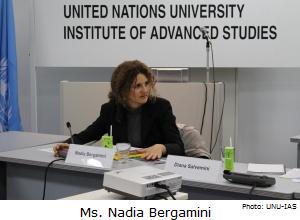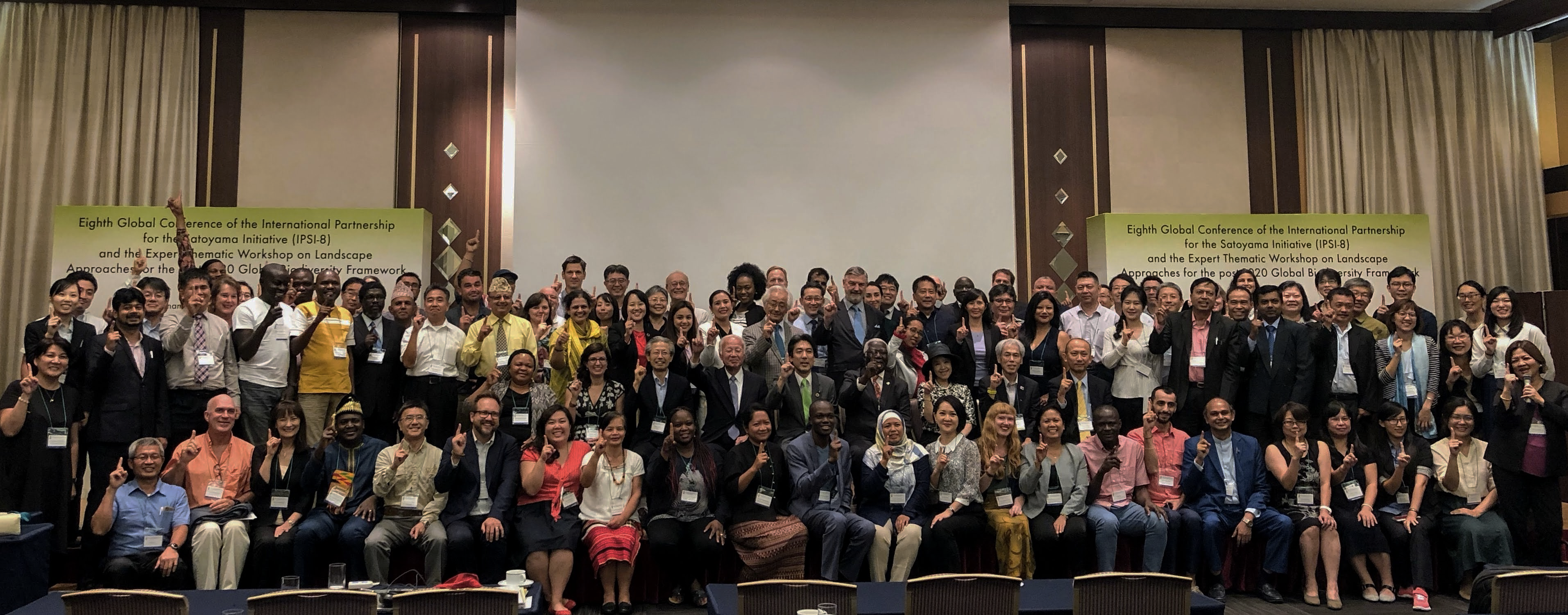In an appropriate coincidence, experts and audience members gathered on Earth Day (22 April 2013) at the United Nations University Institute of Advanced Studies (UNU-IAS) to learn more about the resilience of the world’s socio-ecological production landscapes and seascapes (SEPLS). The public symposium featured speakers from Bioversity International and the United Nations Development Programme.

In his opening remarks, Mr. Wataru Suzuki (Coordinator of the International Satoyama Initiative at UNU-IAS) welcomed the speakers and provided some background on the long collaborative process that has led to the development and testing of a set of twenty indicators for resilience in SEPLS. The International Partnership for the Satoyama Initiative (IPSI), a global effort by over 130 member organizations committed to promoting and revitalizing SEPLS, has provided the context and framework for member organizations to develop collaborative activities around key issues. Bioversity International and the United Nations Development Programme (UNDP) are two IPSI member organizations that have taken leading roles in developing and piloting the indicators for resilience in SEPLS. Speaking on behalf of their respective organizations, Ms. Nadia Bergamini (Bioversity International) and Ms. Diana Salvemini (UNDP) both delivered presentations sharing their experiences with the indicators.
Ms. Bergamini started her presentation by familiarizing the audience with the conceptual basis for SEPLS, which are mosaics that have been formed by harmonious interactions between humans and nature that have fostered human well-being while simultaneously maintaining biodiversity and ecosystem services. Drawing on a simple definition of resilience, she then explained that the indicators of resilience help to measure a community’s capacity to adapt to change while maintaining biodiversity.

Objectives of the collaborative research between Bioversity International and UNU-IAS on developing and testing these indicators included, among other things, developing a way to measure the impacts of agricultural and other land management practices on ecosystem integrity and human well-being, and assessing the ability of communities to adapt, innovate and maintain resilience in SEPLS. The twenty indicators themselves are divided into four categories, namely: ecosystems protection and the maintenance of biodiversity; agricultural biodiversity; knowledge, learning and innovation; social equity and infrastructure.
To date, Bioversity International has tested the indicators in Cuba (Cuchillas del Toa Biosphere Reserve), Kenya (Kitui landscape), Bolivia (Candelaria landscape) and Nepal (Begnas landscape). Ms. Bergamini shared some of the results of this initial testing and lessons learned that have fed into a better understanding of how to optimally apply the indicators and what factors have helped to foster resilience in the respective landscapes. In particular, she emphasized the usefulness of the indicator for establishing a common understanding at community-level of threats and solutions and for determining which strategies can be undertaken to strengthen resilience. Looking forward, she underscored the importance of testing the indicators in a wider range of SEPLS including pastures, wetlands and coastal areas.
The second presentation was delivered by Ms. Diana Salvemini, the project coordinator of the Community Development and Knowledge Management for the Satoyama Initiative Project (COMDEKS), a collaborative effort under IPSI. Funded by the Japan Biodiversity Fund, the COMDEKS project is a unique global project implemented by UNDP in partnership with the Ministry of Environment of Japan, UNU-IAS, and the Secretariat of the United Nations Convention on Biological Diversity. During its first phase, the COMDEKS project supported local community activities in ten different countries around the world to promote sustainable landscape-level management approaches. A second phase that is projected to start later this year will support an additional ten countries. Within each of the first group of ten countries (Cambodia, Ethiopia, Malawi, Slovakia, India, Nepal, Turkey, Ghana, Fiji, Brazil), target landscapes were identified that collectively span coastal areas, watersheds, pastoral systems, lowlands and highland areas, and island ecosystems. The indicators developed by Bioversity International and UNU-IAS have been used as a tool during this first phase to help measure and understand the socio-ecological resilience of the target landscapes and to identify necessary activities to strengthen resilience. Through a participatory and inclusive multi-stakeholder process involving the communities that inhabit, use, and protect these landscapes, these assessments are subsequently compiled and analysed to support the development of a landscape strategy that then helps with the identification of appropriate community-based activities to support with funding.

Ms. Salvemini concluded her presentation by highlighting some of the key lessons learned while applying the indicators. While the indicators were well-received by the participants as a pathway towards engaging stakeholders, successful application of the indicators requires both clearly understandable language tailored to local conditions as well as a facilitator familiar with the community and the capacity to engage local government authorities. Visual aids like photos can be an important communication tool along with participative mapping exercises to provide a spatial dimension to conservation priorities. Looking forward, she emphasized the need for further improvements to the scoring system and strengthening of the social indicators.
Following on the two presentations, Dr. Suneetha Subramanian (UNU-IAS) kicked off the discussion section by providing her comments. Among other things, she emphasized the importance of the indicators encompassing both social and ecological components that contribute to the integrity of functioning SEPLS. The holistic approach provides insight of particular usefulness to policymakers and is helpful at the community level to support strategic identification of necessary actions or existing gaps that should be addressed. In addition, the focus group discussions that have been used during the application of the indicators have the potential to set in motion a larger discussion of the natural and social capital of communities.
The seminar also marked the launch of the latest UNU-IAS Policy Report titled “Developing Indicators of Resilience in Socio-ecological Production Landscapes”. This report along with previous issues within this series are available for download on the UNU-IAS website.
Downloads
Presentation by Ms. Nadia Bergamini (Bioversity International)
Presentation by Ms. Diana Salvemini (UNDP)
Policy Report: Indicators of Resilience in Socio-ecological Production Landscapes (SEPLs)



